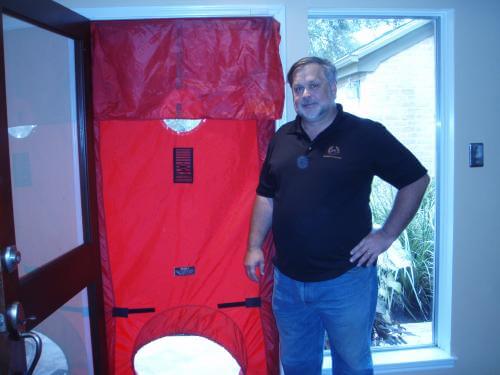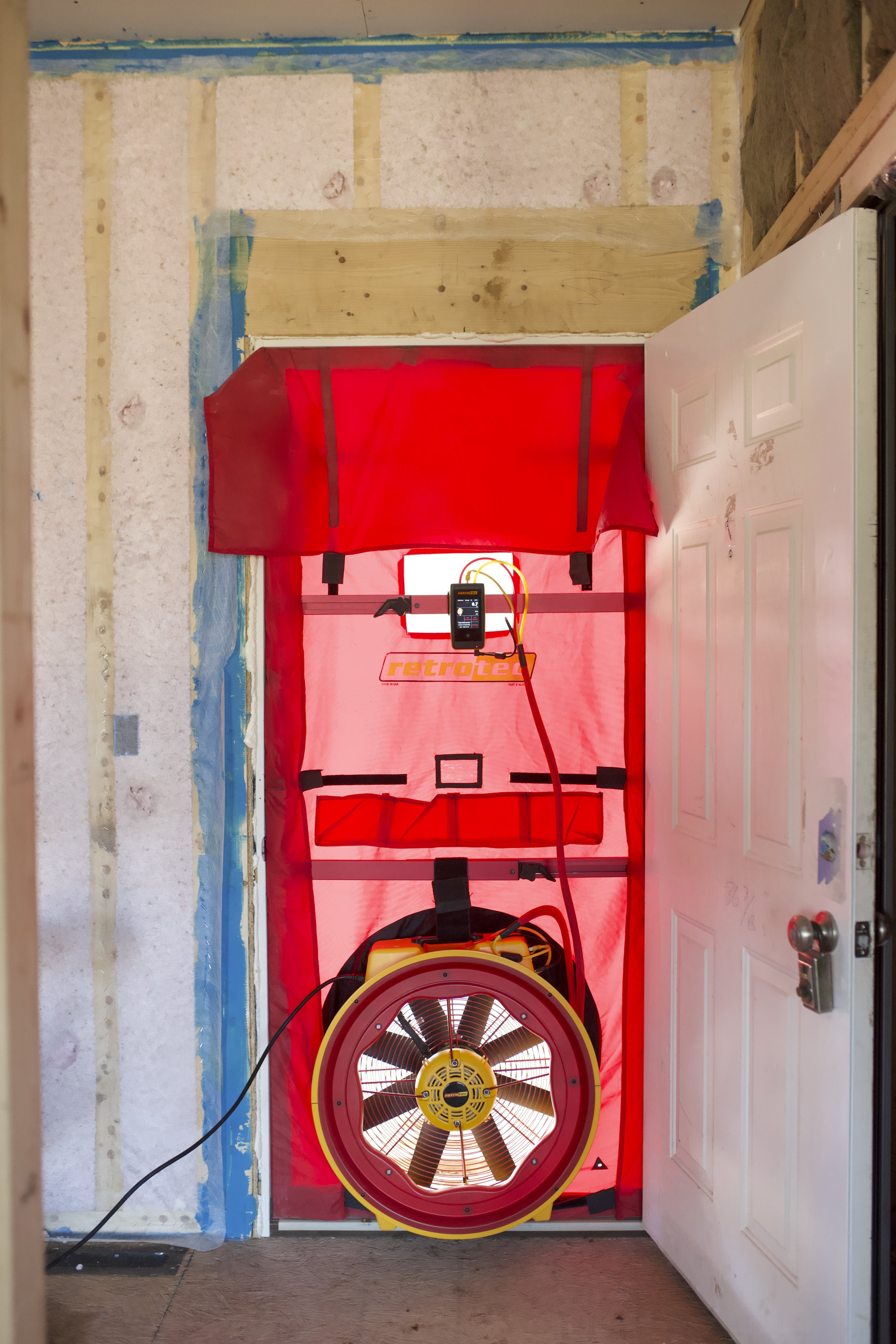Just How Energy Screening Can Lead to Extra Sustainable Living Solutions
Energy screening is a vital device for advertising lasting living. It uncovers ineffectiveness in power use within homes. Methods such as power audits and thermal imaging offer beneficial insights. Property owners can recognize locations needing enhancement, from insulation to home appliances. Dealing with these inadequacies can cause considerable power financial savings. Yet, many continue to be unaware of the full capacity of these techniques. What actions can people require to boost their homes and add to an extra sustainable future?
Comprehending Energy Testing and Its Relevance

Usual Techniques of Power Testing
There are a number of common approaches of energy testing that house owners can make use of to evaluate their energy effectiveness (energy testing south carolina). One extensively made use of technique is the blower door test, which measures the air leakage in a home. By pressurizing the building, it determines breezy areas that may require securing. An additional method is thermal imaging, where infrared cams spot temperature level variants in windows, wall surfaces, and ceilings, highlighting insulation issues.Energy audits are also prominent, including a detailed analysis of a home's power use, often conducted by an expert. These audits may consist of examining home heating and cooling down systems, home appliances, and general energy intake patterns. Additionally, wise energy meters can give real-time data on energy usage, helping homeowners understand their consumption behaviors. With each other, these techniques supply valuable understandings, making it possible for house owners to make educated decisions concerning enhancing their energy efficiency and advertising sustainable living practices
Identifying Power Inefficiencies in your house
Identifying power inadequacies in a home is essential for home owners intending to reduce power consumption and reduced utility costs. Typical locations to evaluate consist of insulation, windows, and devices. Poor insulation can cause considerable warmth loss in wintertime and unwanted warm gain in summertime, making heating and air conditioning systems work harder. Breezy home windows contribute in a similar way, enabling conditioned air to leave and increasing power demand.Additionally, outdated devices usually consume extra power than their contemporary counterparts, better aggravating inadequacy. Home owners ought to additionally consider the illumination system, as incandescent bulbs make use of more energy compared to LED options.Regular maintenance of heating and cooling systems is crucial, as neglect can result in minimized performance. By methodically assessing these elements of a home, house owners can determine areas needing improvement. Attending to these inadequacies not just enhances comfort but likewise adds to a more sustainable way of life by decreasing energy waste.
The Function of Power Audits in Sustainability
Energy audits play a necessary role in promoting sustainability by supplying homeowners with a considerable assessment of their power use. These assessments determine areas where energy is squandered, permitting people to recognize their consumption patterns and make notified choices for renovation. By exposing inadequacies in home heating, air conditioning, insulation, and appliances, power audits offer as a crucial tool for decreasing total energy demand.Furthermore, they help with the implementation of energy-saving steps, such as upgrading insulation or mounting energy-efficient illumination, which can significantly lower energy expenses and lower carbon impacts. The insights gained from a power audit equip property owners to prioritize sustainability in their living settings. As more homes take part in this procedure, the cumulative effect adds to broader ecological goals, fostering a society of energy awareness and obligation. Ultimately, power audits are fundamental to advancing lasting living options, benefitting both specific house owners and the atmosphere at large.
Cutting-edge Technologies for Power Efficiency
As home owners significantly seek to enhance their power performance, ingenious innovations are emerging to sustain these endeavors. Smart home systems, equipped with sensing units and automation, permit house owners to keep an eye on and manage power consumption in real-time. These systems can readjust home heating, lighting, and cooling based on tenancy, consequently reducing waste.In addition, innovations in energy-efficient appliances have made substantial strides. Devices such as ENERGY STAR-rated fridges and cleaning equipments take in less power while providing ideal efficiency. Moreover, the integration of renewable energy resources, like solar panels and wind turbines, allows home owners to generate their own power, reducing dependence on nonrenewable resources.Building products have actually likewise progressed, with alternatives like protected energy-efficient windows and concrete kinds contributing to minimized power loss. Together, these ingenious modern technologies not just boost power effectiveness but also cultivate a more sustainable living setting, encouraging home owners to make impactful options in their energy intake techniques.
Long-Term Perks of Sustainable Living
While many might view lasting living as a trend, its long-term benefits extend far beyond plain way of living selections. Embracing sustainable techniques leads to significant reductions in carbon impacts, adding to a healthier planet. By decreasing source usage and focusing on eco-friendly energy, communities and individuals can experience reduced utility prices. This financial alleviation can enhance economic stability over time, enabling reinvestment in other necessary areas.Furthermore, sustainable living cultivates more powerful community connections as people work together on local efforts, advertising social cohesion. Health and wellness advantages also arise, as lowered contamination and increased eco-friendly rooms improve air high quality and overall wellness. In addition, future generations will acquire a much more sustainable setting, ensuring the availability of natural deposits and biodiversity. Ultimately, the lasting advantages of lasting living encompass environmental, financial, and social dimensions, providing an engaging instance for individuals to embrace and preserve these techniques for the better good.
Steps to Apply Energy-Saving Solutions
Applying energy-saving options starts with an extensive evaluation of power usage patterns to identify locations for renovation. When these patterns are comprehended, individuals can identify energy-efficient upgrades that align with their demands. Continuous surveillance and changes to energy use guarantee that these services stay efficient with time.
Evaluate Power Usage Patterns

Reviewing energy usage patterns is an essential step towards recognizing effective energy-saving options. By systematically tracking usage across my explanation various times and appliances, individuals and companies can pinpoint areas of extreme intake. This analysis can expose peak use periods, allowing a much better understanding of when power needs are highest possible. Furthermore, taking a look at patterns enables comparisons in between similar devices, highlighting those that operate less effectively. Data collection methods, such as clever meters and energy audits, offer valuable understandings right into general power use. Additionally, identifying patterns with time can aid in recognizing seasonal variations and changes in usage behaviors. check here This foundational understanding is crucial for creating targeted techniques that advertise sustainable living and reduce overall energy expense.
Determine Energy-saving Upgrades
To properly implement energy-saving solutions, determining energy-efficient upgrades is necessary for both services and property owners. This process starts with a thorough analysis of existing systems, consisting of a/c systems, insulation, and appliances. Upgrades might incorporate installing ENERGY STAR-rated home appliances, improving insulation, and utilizing energy-efficient windows. Furthermore, applying wise thermostats can optimize heating and cooling schedules, lowering power usage. Shifting to LED illumination is one more reliable step, as it eats significantly much less energy than traditional bulbs. Checking out eco-friendly energy choices, such as solar panels, can give long-term cost savings. Ultimately, focusing on these upgrades not only contributes to lowered energy expenses yet likewise promotes a commitment to sustainability, benefiting both the environment and future generations.
Screen and Adjust Use
Tracking and changing power use is essential for taking full advantage of the advantages of energy-saving solutions. Routinely assessing power consumption patterns allows individuals and services to recognize locations for improvement. By utilizing smart meters and energy management systems, individuals can track real-time use and identify any kind of abnormalities that might show inefficiencies.Adjusting behavior, such as shutting off lights and unplugging extra gadgets, even more enhances energy savings. Additionally, organizing devices to run throughout off-peak hours can greatly decrease costs.Conducting regular energy audits guarantees that executed options continue to be efficient in time. By actively taking part in tracking and changing methods, people can optimize their energy performance, add to sustainability efforts, and ultimately lower their ecological impact.
Frequently Asked Inquiries
How Much Does an Energy Audit Commonly Cost?

Can Energy Screening Assist Reduce Utility Bills?
Power testing can substantially decrease utility expenses by recognizing inadequacies in a home's energy use. By resolving these concerns, home owners usually experience lower usage and expenses, resulting in more economical power administration and enhanced financial savings.
What Qualifications Should an Energy Auditor Have?
An energy auditor must possess relevant qualifications, such as RESNET or BPI, together recommended you read with experience in structure scientific researches. energy testing north carolina. Solid logical skills and knowledge of power performance methods are necessary for conducting exact assessments and supplying efficient recommendations
Are There Government Rewards for Power Effectiveness Upgrades?
Government motivations for energy effectiveness upgrades usually exist, including tax obligation credit scores, discounts, and gives. These programs aim to urge homeowners and businesses to buy energy-saving innovations, ultimately advertising environmental sustainability and decreasing general power intake.
Just how Often Should I Conduct Energy Testing in My Home?
Power screening should preferably be conducted every year to identify inadequacies. Nevertheless, house owners might take into consideration more constant evaluations after substantial renovations, changes in power bills, or if uncommon drafts or temperature level variations are discovered within the home. Power testing enables the analysis of just how well a home makes use of energy, determining areas where waste occurs. Recognizing energy inadequacies in a home is vital for homeowners intending to minimize energy intake and lower energy expenses. Power audits play a crucial role in promoting sustainability by offering house owners with a considerable assessment of their power use. By exposing ineffectiveness in heating, cooling, insulation, and devices, power audits serve as an important tool for minimizing overall energy demand.Furthermore, they facilitate the application of energy-saving measures, such as updating insulation or mounting energy-efficient lights, which can substantially decrease energy bills and decrease carbon impacts. Power testing can significantly decrease energy expenses by identifying ineffectiveness in a home's energy usage.